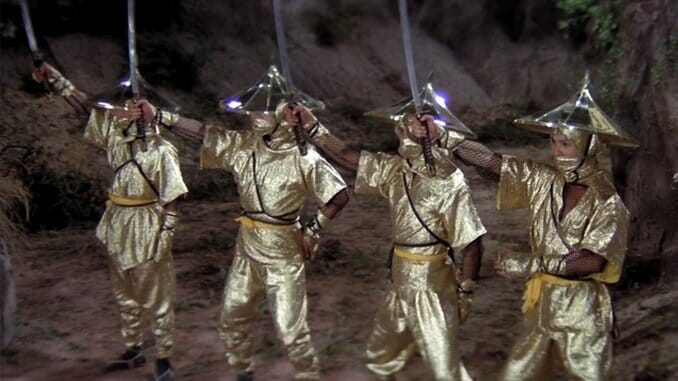Bask in the Glorious Silliness of Five Elements Ninjas While It’s Streaming on Netflix

While browsing through the Netflix streaming library recently, consumed with the sort lingering hangover of 2020 ennui so many of us are still experiencing, I saw something that immediately snapped me out of my funk. I had forgotten, and understandably so, that the world’s largest streamer actually has a decent little array of classic Hong Kong kung fu films of the 1970s and 1980s streaming on its platform. This is a style of film I’m more likely to associate with the boundless, impossible to navigate library of Amazon Prime Video, but seeing some of these stone-cold classics of the genre (The 36th Chamber of Shaolin, Five Deadly Venoms, Legendary Weapons of China, etc) warmed my heart. Those few I just mentioned are some of the most beloved kung fu classics ever made, and I love that they’re right there on Netflix, potentially exposing new fans to a film style they’ve never seriously experienced in the past.
And then I saw one more movie, and I couldn’t help but smile: 1982’s Five Elements Ninjas. And suddenly I had plans for the evening.
Five Elements Ninjas is a “classic” in the same sense that Road House or Cobra are “classics” of their own eras and genres. It’s an absolutely ludicrous, completely over the top, lovably deranged beat-em-up farce of the variety that was affectionately dubbed “chop-socky” in the U.S. after the genre was first popularized by 1973’s Five Fingers of Death. It contains absolutely zero attempt at gravitas, drama or believability. What it does have is ninjas disguised as trees, people being torn limb from limb, and a man flicking a ring off his finger so hard that it embeds itself in another dude’s skull. It plays like something between a live-action version of Itchy & Scratchy, or an excerpt from Power Rangers where the heroes start disemboweling the Putties instead of comically karate chopping them.
In other words, this movie is kung fu entertainment of the very highest order, and you absolutely owe it to yourself to enjoy it to the fullest extent while it’s been made so readily available.
Feel free to stop reading now, and simply go watch Five Elements Ninjas. But if you want to be further sold on the idea, allow me to do just that.
Chang Cheh, Hong Kong Kung Fu, And Colorful Ninjas
Director/screenwriter Chang Cheh, sometimes referred to as “the godfather of Hong Kong cinema,” was an extremely prolific filmmaker who rose to prominence during the upwelling of wuxia (swordplay) and martial arts films that became extremely popular in Chinese cinema in the 1960s and 1970s. Paying his dues behind the scenes, he eventually moved on to directing, and—after 1967’s extremely influential One-Armed Swordsman—became one of the most famous directors of martial arts movies in the world. Working for the iconic Shaw Brothers Studio, he churned out nearly 100 martial arts movies in the next two decades—an insanely high work flow era. His films in certain eras are routinely connected by reappearing stars—first David Chiang and Ti Lung in early 1970s movies like The Duel or Boxer From Shantung, and then the Venom Mob group of collaborators (Kuo Chui, Lo Mang, Chiang Sheng, etc) in movies like the aforementioned Five Deadly Venoms and the even more spectacular Crippled Avengers.
-

-

-

-

-

-

-

-

-

-

-

-

-

-

-

-

-

-

-

-

-

-

-

-

-

-

-

-

-

-

-

-

-

-

-

-

-

-

-

-








































